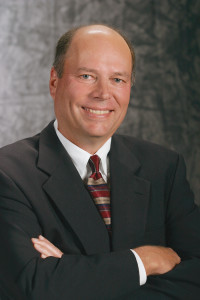Cramer Products, Inc.
Interview with Tom Rogge, CEO of Cramer Products, Inc. and Marshall Dahneke, CEO of Performance Health
Tom, you are about to retire but have left quite a legacy—you have tripled profits and doubled sales. Tell us about Cramer’s growth under your reign.
Rogge: I started in 1991. Cramer had just signed an agreement with the “Greatest Athlete of All Time” according to ESPN, Bo Jackson. Cramer had invested heavily in a line of Bo Med products and was devastated when Bo hurt his hip within weeks of the launch, and had to leave football and was released by the Royals. We moved quickly to minimize losses and wrote off the investment within 9 months and resized and refocused the company. In the 2000’s we began to be very deliberate about our growth because we had high share in a mature market and so we developed strategic plans every 5 years. It paid off as we were able to more than triple our profitability while almost doubling our consolidated business. Fast forward to today, and we were purchased in 2013 by Performance Health, who in turn is owned by Gridiron Capital. That acquisition will fuel the next round of Cramer growth as we combine forces to penetrate complimentary channels more deeply.
Let’s take a step back and talk about how all of this came about. The company is private, right? Who started it?
Rogge: The Cramer boys, Chuck and Frank, started with the development of an athletic liniment in 1918. Chuck, a pole vaulter and pharmacy student wanted to get back in the game quicker than his doctor would release him and invented Athletic Liniment with the encouragement of his mentor, Dr. Fog Allen of Kansas University. Shortly thereafter, they continued to expand the product offer and by the late 40’s an entire profession—athletic training—was created around products and procedures that prevent and heal athletic injuries. In 1950 Cramer provided the funding for the National Athletic Trainers Association, which has grown to over 40,000 members and a staff of 50 with headquarters in Dallas, Texas.The business was run by the family until 1985 when it was decided there were too many family members to be effective and put professional management in place. As the second generation retired, they established an ESOP to provide sufficient liquidity to the family, yet ensure the continuation of a local business in Gardner, KS for their employees.
What were the key ingredients that led to Cramer’s success in the last decade in spite of a mature industry?
Rogge: We decided to undertake a comprehensive strategic look at our business and figure out where the best opportunities were. We knew we had some great advantages in our favor—like a well-known and respected brand and an executive team that worked well together. However, the brand hadn’t been actively managed, and the athletic training industry was changing rapidly along with new technology. We were aware our strength had always been as a product company so we committed to an aggressive approach to product expansion—both internally by setting our sights on being the clear #2 player in tape behind Johnson and Johnson and externally, by acquiring product that was complementary to our current lines and markets. In addition, we more clearly defined our brand and our communication approach to better match the style of the latest generation of athletic trainers. Finally, we also committed to expanding distribution in retail like Dick’s Sporting Goods and Academy Sports—the fastest growing channel.
Tom, you are famous, at least to me, for saying, “Planning doesn’t assure success, implementation does”. So talk about what you and your team did.
Well, planning was important because it created our roadmap. As you know, we did a major plan every 5 years and then implemented it. We stayed dedicated to what we had agreed to in the plan and it paid off.We acquired two companies along the way—Cosom Sporting Goods in 2004 and Active Ankle in 2008. Both companies added to revenue, and we were able to integrate them into operations sufficiently enough to reduce costs and grow profitability. We took what felt like a big risk in 2007—we levered our strengthened brand with a significant upper single digit price hike. We held our breath, but the prices stuck and we didn’t get major push back. Further, we reduced total headcount and moved some manufacturing to Asia and continued internal product development. The combination of these steps resulted in triple the profits and nearly double consolidated sales.
Is there an end to the story?
Rogge: No, not for Cramer but there is a new chapter. Not too long ago Cramer caught the eye of a company in a related industry, Performance Health, which is owned by private equity firm Gridiron Capital. They have a few well-known brands of their own– Biofreeze and TheraBand– and are strong in markets complementary to Cramer.Marshall Dahneke: I was struck by the similarities of our businesses—strong brands and belief in them, adjacent vertical markets, complimentary customers –and the opportunity to help each other achieve even better penetration. The more we talked the better we felt about what was possible.Rogge: The timing was good for Cramer—we had had a great run on sales and profitability and were facing a significant personnel transition with impending retirements. The purchase went through on August 6, 2013.
How is it working?
Dahneke: We bought Cramer because we liked it, not because we felt it was broken and we could fix it. We share a lot of the same beliefs—in strong brands, in targeting specific customers and serving them to the best of our abilities—and we have mutual respect. We clearly defined the strategic drivers of value and we are on course to realize the plan we set out on which is significant incremental revenue growth across all of our collective channels.

